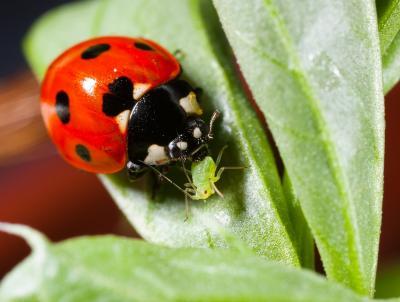Ladybirds, also known as ladybugs, have warning signals that indicate the quality of their diet and how poisonous they are, an international team of scientists found.
Researchers grew seven-spotted ladybirds on a diet of either low or high quality, and measured the redness and levels of toxic defensive chemicals in each ladybird.
The ladybirds reared on the high-quality diet had redder wings than those on the low-quality diet. They also had higher levels of precoccinelline, a chemical that is toxic to their bird predators.
These findings suggest that better-fed ladybirds can produce stronger warning signals and more toxic chemicals and can thus deter predators more easily.
The variations in redness of ladybirds appear subtle to humans, but are easily discerned by birds. The research team measured the pigmentation or “redness” of ladybirds biochemically and showed that redder ladybirds are more conspicuous to their typical bird predator, the starling.
It is unknown how the paler ladybirds protect themselves against predators, but they may spend more time in hiding than redder ladybirds.
The scientists say these findings may relate to other species in the animal kingdom.
The research was published in the journal Functional Ecology on Feb. 7.







